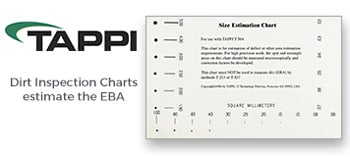 Search
Search
Use the search bar or filters below to find any TAPPI product or publication.
Journal articles

Magazine articles

COVID-19 Has Created New Opportunities for Tissue and Towel, Paper360º January/February 2021
COVID-19 Has Created New Opportunities for Tissue and Towel, Paper360º January/February 2021
Journal articles

Magazine articles

A Century of tissue: Career experts explore Past,
A Century of tissue: Career experts explore Past, future, Tissue360º Spring/Summer 2015
Journal articles

Magazine articles

Achieve Superior Performance with TT Headbox, Tissue360º Fall/Winter 2023
Achieve Superior Performance with TT Headbox, Tissue360º Fal
Journal articles

Magazine articles

Measurement of the dynamics of fluid sorption for tissue papers, TAPPI Journal July 2019
ABSTRACT: Liquid absorption ability belongs to the most important features of tissue papers. Due to non-homo-geneous internal and superficial structures, precise and fast evaluation of this property is challenging. The main aim of the presented research was to design an experimental device dedicated to the measurement of the kinetics of wetting phenomenon for tissue papers. The second aim was to evaluate whether it was possible to use image analysis for more precise characterization of liquid absorption properties of tissue paper. The obtained results showed that the method used, based on image analysis supported by gravimetric methods, proved to efficiently and quantitatively characterize the dynamics of liquid absorption for tissue papers. Supplementary parameters such as absorption anisotropy and in-plane velocity were obtained. Different experi-mental results were obtained for various tissue paper grades. Furthermore, water absorption capacity calculated from image analysis data correlated with results obtained according to the standard method EN ISO 12625-8:2010 “Tissue paper and tissue products—Part 8: Water-absorption time and water-absorption capacity, basket-immersion test method.” Hence, the presented device quantitatively characterizes and discriminates water absorption phenom-enon for tissue papers.
Journal articles

Magazine articles

Celupaper Puts Its Trust in Toscotec, Tissue360º Fall/Winter 2020
Celupaper Puts Its Trust in Toscotec, Tissue360º Fall/Winter 2020
Journal articles

Magazine articles

Research on improving the basis weight measurement accuracy of tissue paper based on PSO-BP neural network, TAPPI Journal October 2022
ABSTRACT: The near-infrared (NIR) sensor can be used for measuring the basis weight and moisture of tissue paper, but the measurement accuracy is not ideal for this paper grade. The weight range of the tissue is 10~30 g/m2, indicating that it is a low gram weight paper. The temperature and humidity of the production environment significantly impact an NIR sensor. This paper focuses on improving the measurement accuracy of tissue paper basis weight. In order to reduce the influences of temperature and humidity, a mathematical model based on a particle swarm optimization back propagation (PSO-BP) neural network is proposed. In comparison with multiple linear regression measurement models, the basis weight measurement error with the PSO-BP model is within ± 0.5 g/m2. This model can effectively improve the measurement accuracy and has a good effect on overcoming the basis weight nonlinear effect caused by the changes in ambient temperature and humidity.
Journal articles

Magazine articles

Dust Mitigation Safety Course: Vital for Tissue Makers, Tissue360º Fall/Winter 2024
Journal articles

Magazine articles

Vajda Papír Takes a Big Step Forward, Tissue360º Spring/Summer 2021
Vajda Papír Takes a Big Step Forward, Tissue360º Spring/Summer 2021
Journal articles

Magazine articles

In case you missed it in TAPPI’s electronic newsletter, Tissue360º Fall/Winter 2023
Journal articles

Magazine articles

Taison Group’s Twin PrimeLineSTs Bamboo Tigers, Tissue360º Spring/Summer 2019
Taison Group’s Twin PrimeLineSTs Bamboo Tigers, Tissue360º Spring/Summer 2019





